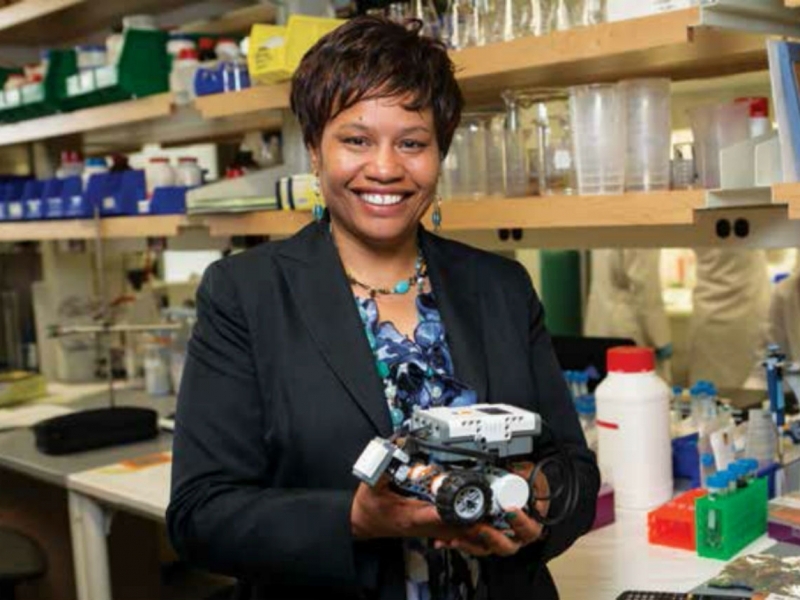Strong Stem

Photograph by Joseph V. Labolito
The U.S. ranks 25th in mathematics skills and 17th in science skills among industrialized nations. To improve those rankings, the Obama administration has challenged colleges and universities to graduate 1 million students in science, technology, engineering and math (STEM) over the next 10 years. Leaders like Jamie Bracey, EDU ’07, ’11, director of STEM education, outreach and research in the College of Engineering, are working to bring more diversity to the field. Under Bracey’s direction Temple’s Math Engineering Science Achievement (MESA) program earned second place at the 2014 MESA USA National Engineering Design Competition for their creation of a functioning prosthetic arm.
Why is diversity in the STEM fields important?
We’re seeing a lot more global connectivity, and that means we need to engage people who have differences in thinking, in experiences, and the capacity to network with others around the world. Having that diversity is extremely important for us to continue to be viewed as a global resource and a global power.
What are some of the barriers to creating that diversity?
With children of color, the thought has been that they can’t do the work. In many cases, they’re coming out of schools that have given them an inflated sense of preparation. They’ll get an A and then come here and find out that compared with other schools, that A is more like a B or a C. The rigor has to be there, because you can’t be in these spaces and not under- stand math or science. You don’t practice building a bridge—you must do it right the first time. So the responsibility to ensure that students are ready for that is high.
How does the MESA program help break down those barriers?
You have to create identity in the field. If you believe you’re a part of something, you’re more likely to stick with it. The MESA program provides a cognitive apprenticeship model for students—pairing them with experts not only to learn about what they produce, but also how they think. That kind of immersion, learning the culture of how to be in that field, is important for any institution involved in STEM education.
What is your hope for the future of STEM education?
Higher education is the sandwich between the K through 12 schools and industry. The first group isn’t communicating with the second, so we become the hub in between. If we don’t ensure that rigor, and we don’t respond to the needs of the market, I think people will go around us to get the skills they need. My ideal—my dream state—would be to help an institution grow into becoming a more authentic link between those two spaces.